Image processing, pattern recognition. Рубрика в журнале - Компьютерная оптика
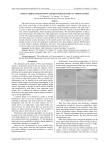
Aerial vehicles detection and recognition for UAV vision system
Статья научная
This article focuses on aerial vehicle detection and recognition by a wide field of view monocular vision system that can be installed on UAVs (unmanned aerial vehicles). The objects are mostly observed on the background of clouds under regular daylight conditions. The main idea is to create a multi-step approach based on a preliminary detection, regions of interest (ROI) selection, contour segmentation, object matching and localization. The described algorithm is able to detect small targets, but unlike many other approaches is designed to work with large-scale objects as well. The suggested algorithm is also intended to recognize and track the aerial vehicles of specific kind using a set of reference objects defined by their 3D models. For that purpose a computationally efficient contour descriptor for the models and the test objects is calculated. An experimental research on real video sequences is performed. The video database contains different types of aerial vehicles: airplanes, helicopters, and UAVs. The proposed approach shows good accuracy in all case studies and can be implemented in onboard vision systems.
Бесплатно
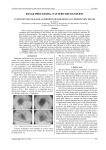
An efficient block-based algorithm for hair removal in dermoscopic images
Статья научная
Hair occlusion in dermoscopy images affects the diagnostic operation of the skin lesion. Segmentation and classification of skin lesions are two major steps of the diagnostic operation required by dermatologists. We propose a new algorithm for hair removal in dermoscopy images that includes two main stages: hair detection and inpainting. In hair detection, a morphological bottom-hat operation is implemented on Y-channel image of YIQ color space followed by a binarization operation. In inpainting, the repaired Y-channel is partitioned into 256 non-overlapped blocks and for each block, white pixels are replaced by locating the highest peak, using a histogram function and a morphological close operation. The proposed algorithm reports a true positive rate (sensitivity) of 97.36 %, a false positive rate (fall-out) of 4.25 %, and a true negative rate (specificity) of 95.75 %. The diagnostic accuracy achieved is recorded at a high level of 95.78 %.
Бесплатно
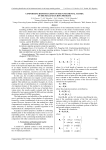
Conforming identification of the fundamental matrix in the image matching problem
Статья научная
The article considers the conforming identification of the fundamental matrix in the image matching problem. The method consists in the division of the initial overdetermined system into lesser dimensional subsystems. On these subsystems, a set of solutions is obtained, from which a subset of the most conforming solutions is defined. Then, on this subset the resulting solution is deduced. Since these subsystems are formed by all possible combinations of rows in the initial system, this method demonstrates high accuracy and stability, although it is computationally complex. A comparison with the methods of least squares, least absolute deviations, and the RANSAC method is drawn.
Бесплатно
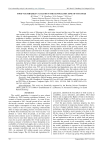
Food vulnerability analysis in the central dry zone of Myanmar
Статья научная
The central dry zone of Myanmar is the most water stressed and also one of the most food insecure regions in the country. In the Dry Zone, the total population is 10.1 million people in 54 townships, in which approximately 43 % of people live below the poverty line and 40 - 50 % of the rural population is landless. Agriculture is the most important economic sector in Myanmar as it is essential for the national food security and a major source of livelihood of the people. In this region the adverse effects of climate change such as a late or early onset of the monsoon season, longer dry spells, erratic rainfall, increasing temperatures, heavy rains, stronger typhoons, extreme spatial-temporal variability of rainfall, high intensities, limited rainfall events in the growing season, heat stress, drought, flooding, sea water intrusion, land degradation, desertification, deforestation, and other natural disasters are believed to be major constraints to food security. Theses extreme climatic events are likely to increase in frequency and magnitude, leading to serious drought periods and extreme floods. Food insecurity is an important thing that must be reviewed because it affects the lives of many people. For food vulnerability, we use the following indicators: slope, precipitation, vegetation, soil, erosion, land degradation and harvest failure in ArcGIS software. The erosion is influenced by rainfall and slope, while land degradation is directly related to vegetation, drainage and soil. In the meantime, the harvest failure can be generated by rainfall and flood potential zones. The results show that around 45 % of the area studied comes under a very high erosion danger level, 70 % are in the average harvest failure zone, 59 % are in the intermediate land degradation area, and overall around 45 % of the studied area comes under the insecure food vulnerability zone. Our analysis shows that an increase in the alluvial farming by 1745.33 km2 since 1988 has helped reduce the insecure food vulnerability. The food vulnerability map is also relevant to increased population and low income areas. This paper is helpful for identifying the areas of food needs in central dry zone of Myanmar.
Бесплатно
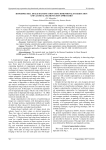
Статья научная
Unsupervised segmentation of hyperspectral satellite images is a challenging task due to the nature of such images. In this paper, we address this task using the following three-step procedure. First, we reduce the dimensionality of the hyperspectral images. Then, we apply one of classical segmentation algorithms (segmentation via clustering, region growing, or watershed transform). Finally, to overcome the problem of over-segmentation, we use a region merging procedure based on priority queues. To find the parameters of the algorithms and to compare the segmentation approaches, we use known measures of the segmentation quality (global consistency error and rand index) and well-known hyperspectral images.
Бесплатно
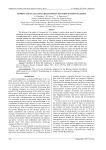
Mapping and evaluating urban density patterns in Moscow, Russia
Статья научная
The defense of the notion of ‘compact city’ as a strategy to reduce urban sprawl to support greater utilization of existing infrastructure and services in more compact areas and to improve the connectivity of employment hubs is actively discussed in urban research. Using the urban residential density as a surrogate measure for urban compactness, this paper empirically examines a cadaster database that contains details of every property with a view of capturing changes in urban residential density patterns across Moscow using geospatial techniques. The policy of densification in chase of a more compact city has produced mixed results. Findings of this study signal that the urban densities across the buffer zones around Moscow city are significantly different. The Landsat images from 1995, 2005 and 2016 are classified based on the maximum likelihood to expand the land use/cover maps and identify the land cover. Then, the area coverage for all the land use/cover types at different points in time is combined with the distance from the city center. After that, urbanization densities from the city center toward the outskirts for every 1-km distance from 1 to 60 km are calculated. The city density on the distance of 1 to 35 km is found to be very high in the years 1995 to 2016. As usual, the population, traffic conditions, industrialization and government policy are the major factors that influenced the urban expansion.
Бесплатно
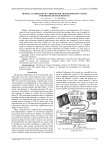
Optimal calibration of a prism-based videoendoscopic system for precise 3D measurements
Статья научная
Modern videoendoscopes are capable of performing precise three-dimensional (3D) measurements of hard-to-reach elements. An attachable prism-based stereo adapter allows one to register images from two different viewpoints using a single sensor and apply stereoscopic methods. The key condition for achieving high measurement accuracy is the optimal choice of a mathematical model for calibration and 3D reconstruction procedures. In this paper, the conventional pinhole camera models with polynomial distortion approximation were analyzed and compared to the ray tracing model based on the vector form of Snell’s law. We, first, conducted a series of experiments using an industrial videoendoscope and utilized the criteria based on the measurement error of a segment length to evaluate the mathematical models considered. The experimental results confirmed a theoretical conclusion that the ray tracing model outperforms the pinhole models in a wide range of working distances. The results may be useful for the development of new stereoscopic measurement tools and algorithms for remote visual inspection in industrial and medical applications.
Бесплатно

